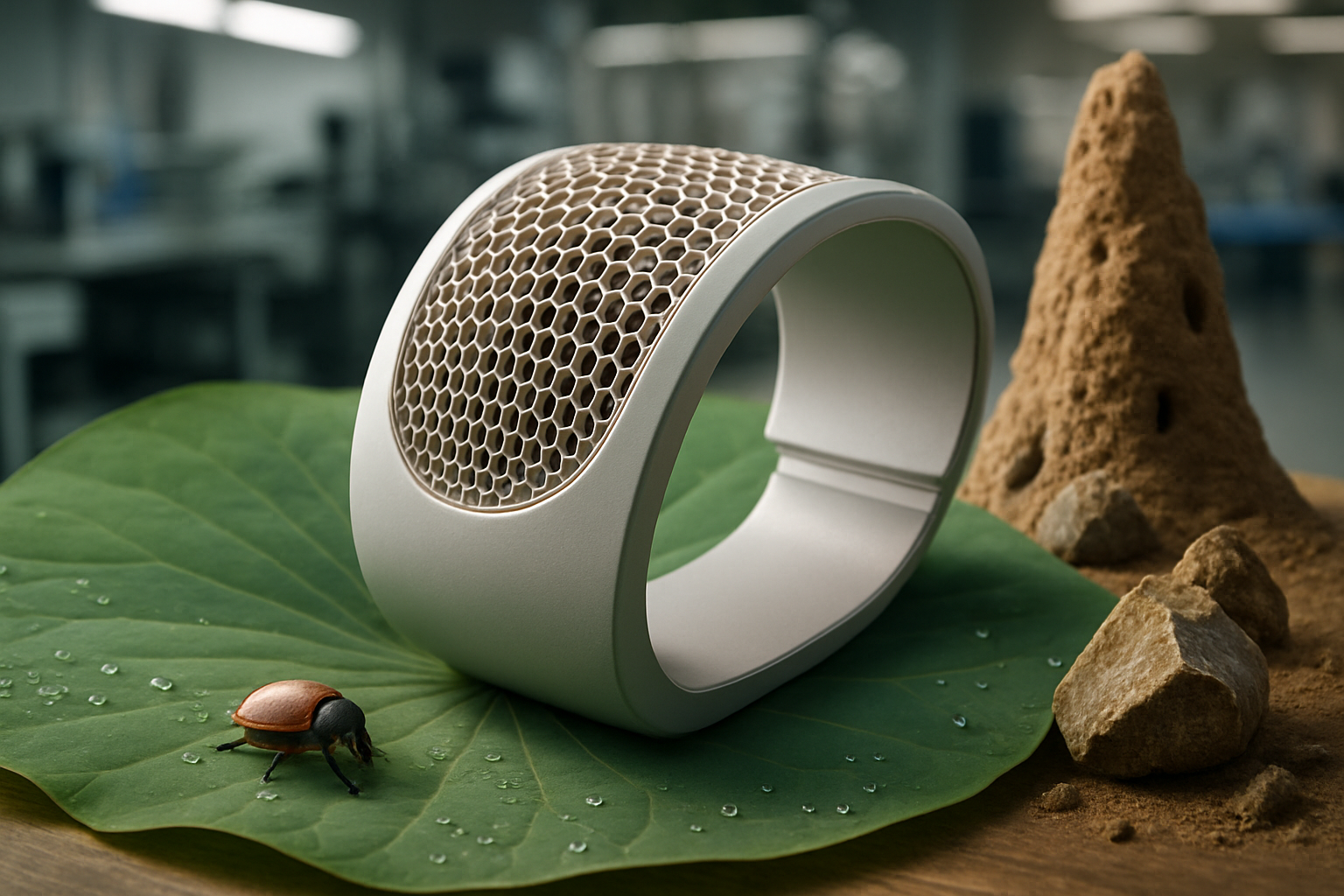Biomimicry in Industrial Design: Nature-Inspired Solutions
Industrial innovation often looks to the future, but a growing trend is finding inspiration in the oldest designer of all: nature. Biomimicry, the practice of emulating nature's time-tested patterns and strategies, is revolutionizing industrial design. This approach not only leads to more efficient and sustainable solutions but also opens up new avenues for creative problem-solving in manufacturing and product development.

The Origins and Evolution of Biomimicry
Biomimicry as a concept has existed for centuries, with early examples including Leonardo da Vinci’s flying machine designs inspired by birds. However, it wasn’t until the late 20th century that biomimicry emerged as a formal discipline. Janine Benyus, a biologist and innovation consultant, popularized the term in her 1997 book “Biomimicry: Innovation Inspired by Nature.”
Since then, biomimicry has gained traction across various industries. Companies like Qualcomm, Boeing, and Nike have embraced this approach, leading to groundbreaking innovations. The field has evolved from simple imitation of natural forms to a deeper understanding of nature’s underlying principles and processes.
Key Principles of Biomimetic Design
Biomimicry in industrial design is guided by several key principles that help translate nature’s solutions into practical applications:
-
Function-based approach: Rather than copying nature’s forms, designers focus on understanding and replicating the functions that make natural systems effective.
-
Circular economy: Nature operates in closed-loop systems where waste becomes a resource. This principle inspires industrial designs that minimize waste and promote recycling.
-
Resilience through diversity: Natural ecosystems thrive on diversity, inspiring designs that are adaptable and resistant to failure.
-
Energy efficiency: Nature optimizes energy use, a crucial consideration in industrial processes aiming to reduce carbon footprints.
-
Multi-functional design: Biological structures often serve multiple purposes, a principle that can lead to more efficient and versatile industrial products.
Biomimicry in Action: Industrial Case Studies
Numerous industries have successfully implemented biomimetic designs, resulting in innovative solutions to complex problems:
-
Aerospace: The kingfisher’s beak inspired the design of high-speed train noses in Japan, reducing noise and improving energy efficiency.
-
Architecture: The Eastgate Centre in Harare, Zimbabwe, uses a ventilation system modeled after termite mounds, significantly reducing energy consumption.
-
Materials Science: Gecko-inspired adhesives have led to the development of reusable, residue-free tapes and fasteners.
-
Water Management: The Namib desert beetle’s water-harvesting capabilities have inspired fog-catching technologies for water-scarce regions.
-
Robotics: Soft robotics, inspired by the flexible bodies of octopuses and other soft-bodied creatures, is revolutionizing industrial automation and medical devices.
Challenges and Future Prospects
While biomimicry offers immense potential, it also presents challenges. Translating biological solutions to industrial scale can be complex and time-consuming. Additionally, the interdisciplinary nature of biomimicry requires collaboration between biologists, engineers, and designers, which can be difficult to orchestrate in traditional industrial settings.
However, the future of biomimicry in industrial design looks promising. Advancements in fields like nanotechnology and 3D printing are making it easier to replicate nature’s intricate designs. Moreover, the growing emphasis on sustainability in industry aligns perfectly with biomimicry’s inherently eco-friendly approach.
The Economic Impact of Biomimetic Innovation
Biomimicry is not just an environmental strategy; it’s increasingly recognized as a driver of economic growth. The global biomimicry market is projected to reach $18.5 billion by 2028, with significant growth in sectors like construction, automotive, and healthcare. Companies that successfully implement biomimetic solutions often see improvements in efficiency, reduced material costs, and enhanced product performance, leading to a competitive edge in the market.
Biomimicry Toolkit for Industrial Designers
• Study biological systems relevant to your industry challenge
• Identify the core principles behind nature’s solutions
• Collaborate with biologists and ecologists for deeper insights
• Use abstraction to translate biological concepts into industrial applications
• Prototype and iterate, mimicking nature’s evolutionary process
• Consider the entire lifecycle of your product, aiming for closed-loop systems
• Integrate biomimicry thinking into your design process from the outset
As industries continue to face complex challenges in sustainability, efficiency, and innovation, biomimicry offers a powerful framework for finding solutions. By looking to nature’s 3.8 billion years of research and development, industrial designers can create products and processes that are not only more effective but also in harmony with the natural world. The future of industrial design lies in this synergy between human ingenuity and nature’s wisdom, promising a new era of sustainable and efficient innovation.





